Birds have held a profound place in the tapestry of human culture and belief systems for centuries.
Throughout human history, the natural world has fascinated and inspired us, leading to the creation of rich mythologies that reflect our beliefs, values, and aspirations. Among the many creatures that have captured our imagination, birds hold a special place. From the majestic eagle to the enigmatic owl, birds have been revered as messengers, symbols, and guides in cultures around the world. This article embarks on a captivating journey into the “Cultural Significance of Birds in Global Mythology,” exploring their roles across diverse societies, shedding light on their spiritual meanings, and unveiling the intricate tapestry of human-bird relationships.
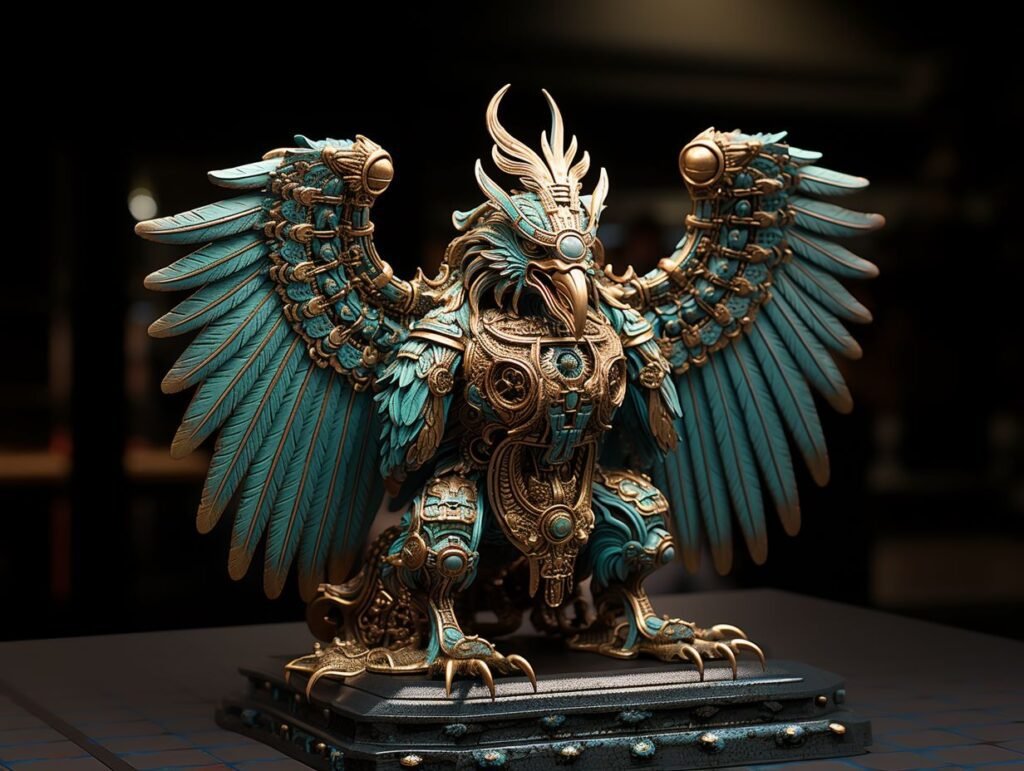
Bird Symbolism in Spiritual Beliefs.
What is the significance of birds in mythology? Beyond their earthly existence, birds have been perceived as intermediaries between the mundane and the divine. Their ability to traverse the skies and inhabit realms beyond human reach made them natural conduits for spiritual messages.
In various mythologies, from the ancient Egyptians’ reverence for the ibis to Native American nations’ connection with the eagle, birds were believed to carry prayers, blessings, and even departed souls between the mortal world and the beyond.
In Hinduism, the mythical bird Garuda, with its ability to fly swiftly and carry immense weight, symbolizes the transport of human prayers to the gods. Similarly, the Chinese phoenix, a radiant bird of unparalleled beauty, embodies renewal and resurrection, representing the cyclical nature of life and the eternal cycle of creation and destruction.

Avian Symbolism in Different Cultures.
What do birds symbolize in the spiritual world? Birds hold multifaceted symbolism in spiritual contexts, often embodying virtues and qualities that humans aspire to attain. The soaring flight of birds represents freedom, the ability to rise above earthly concerns, and the pursuit of higher truths. Additionally, birds symbolize transformation, mirroring their own metamorphosis from fragile eggs to creatures of the sky.
The Phoenix, a common symbol of renewal and rebirth, is found in cultures as varied as ancient Egypt, Greco-Roman mythology, and Chinese folklore.
In Native American traditions, the eagle is revered as a messenger between humans and the Great Spirit. Its ability to fly high and see far grants it a unique perspective, symbolizing spiritual insight and wisdom.
The Maori people of New Zealand regard the piwakawaka, or fantail, as a guardian spirit that watches over them and serves as a connection to the spirit world.
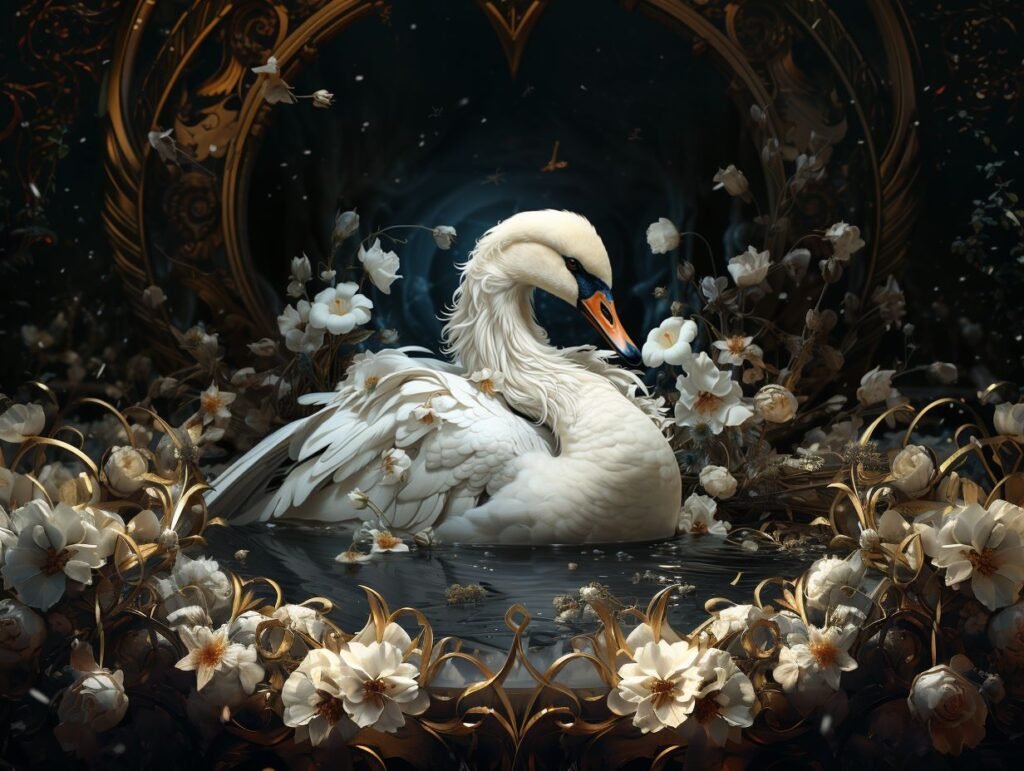

Bird Symbolism in Europe.
What do birds symbolize in Europe? European mythologies also brim with avian symbolism, each culture attributing distinct meanings to different bird species.
In ancient Greece, the owl was associated with Athena, the goddess of wisdom, making the owl a symbol of intelligence and foresight. The raven, on the other hand, occupied a central role in Norse mythology. Odin, the god of knowledge and poetry, was often accompanied by two ravens, Huginn and Muninn, representing thought and memory.
European folklore is replete with tales of the cuckoo, whose arrival marked the arrival of spring and the rebirth of nature.
The swan, with its graceful elegance, has often been associated with love and beauty, making appearances in both Celtic and Scandinavian mythologies.

Ancient Times: Birds as Harbingers.
What did the birds represent in ancient times? The connection between birds and omens traces back to ancient civilizations. The belief that birds could foretell future events was widespread, leading to the practice of ornithomancy, or divination through observing birds’ behavior. Different species of birds and their calls were interpreted as messages from the gods or the cosmos.
In ancient Rome, the Augurs were priests who interpreted the flights and calls of birds to predict the outcomes of various events.
Similarly, in ancient China, the appearance and behavior of certain birds were regarded as signs from the universe, influencing decisions ranging from military campaigns to agricultural practices.
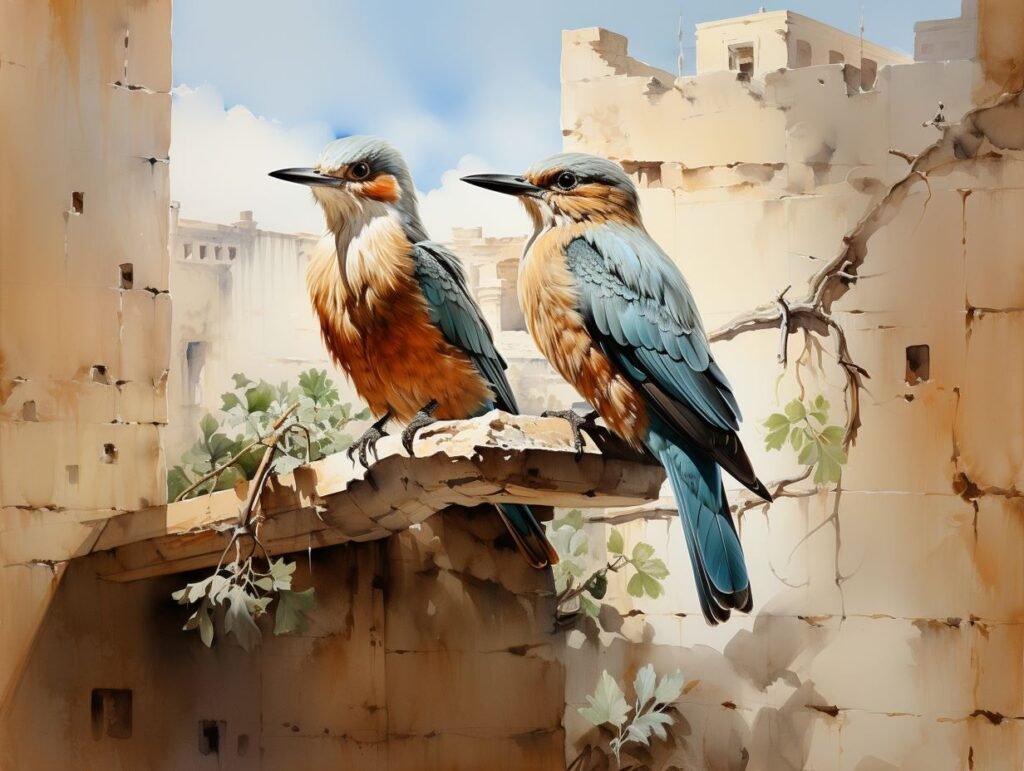
Cross-Cultural Insights from Wikipedia.
The cultural significance of birds in Global Mythology Wikipedia pages offer an expansive repository of knowledge, showcasing the diverse ways in which cultures worldwide have integrated avian symbolism into their belief systems.
From the majestic falcon of ancient Egypt to the sacred cranes of Japan, these entries provide a glimpse into the intricate relationships between birds and human cultures.
The Apache people of North America revere the golden eagle as a protector and a connection to the divine.
In Japanese mythology, the crane is a symbol of longevity and good fortune. These entries highlight the birds’ capacity to transcend geographical boundaries and weave into the fabric of human consciousn
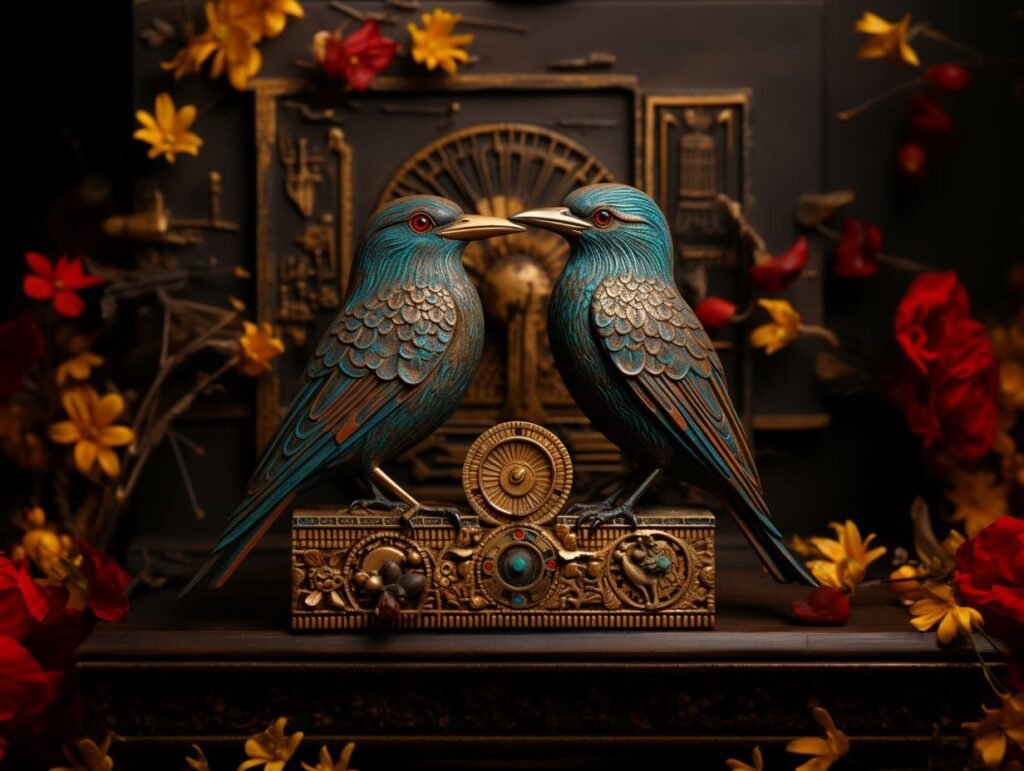
Interwoven Destiny: Birds and Humans Relationship.
Birds and humans have shared an interdependent relationship throughout history. Beyond the realm of symbolism, birds have served as sources of sustenance, companionship, and even artistic inspiration. Many ancient cultures practiced falconry, an art that involves training birds of prey for hunting. This practice established a unique bond between humans and birds, showcasing the harmonious coexistence between species.
In indigenous cultures, birds often appear as totem animals, representing clans, families, or individuals. The Navajo people, for instance, hold the turkey vulture in high regard, associating it with cleansing and purification due to its scavenging behavior. This intricate connection underscores the intricate ways in which birds have shaped cultural narratives.
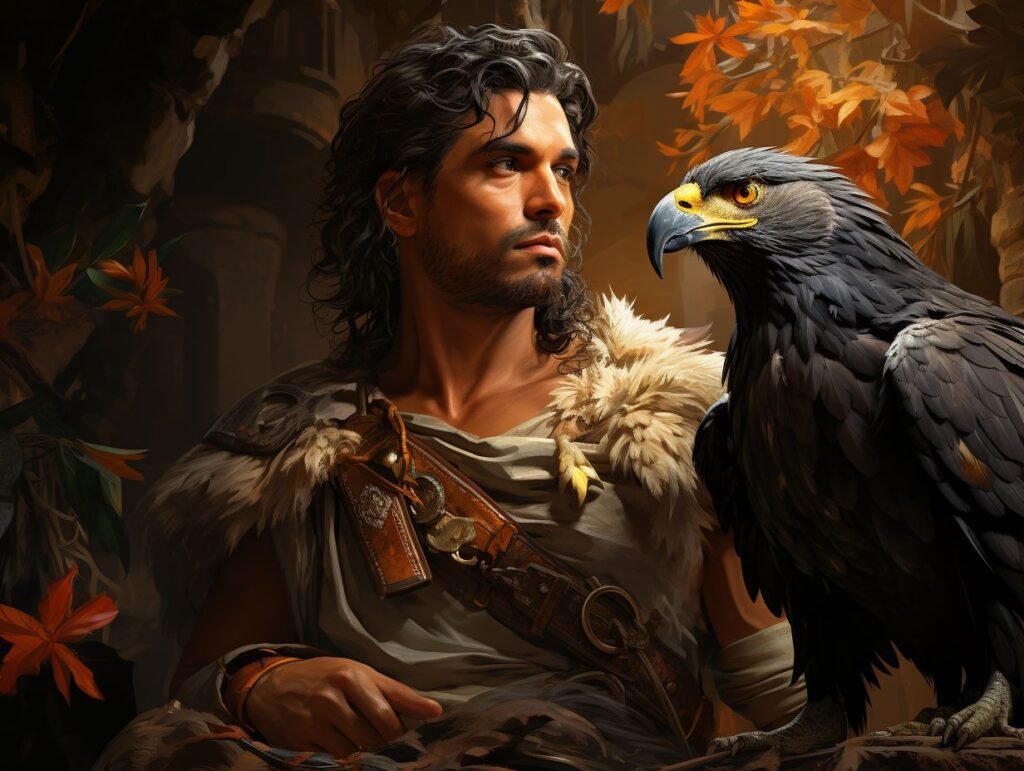
Practical Uses of Birds in Mythology.
What are the uses of birds? Mythologies have not only attributed symbolic roles to birds but also endowed them with practical functions within their narratives. Birds have frequently served as guides, messengers, or even as bestowers of magical gifts to heroes on their quests. This dual nature of birds—bridging the ethereal and the practical—creates a rich tapestry of meanings.
In the Arthurian legend of the Holy Grail, a swan guides the protagonist, Sir Perceval, to the Grail Castle.
In the Hindu epic Ramayana, the heroic prince Rama befriends the eagle Jatayu, who valiantly tries to save Rama’s wife, Sita, from the clutches of the demon king Ravana. These instances illustrate the integral roles birds play in driving the plot and shaping the destiny of the characters.
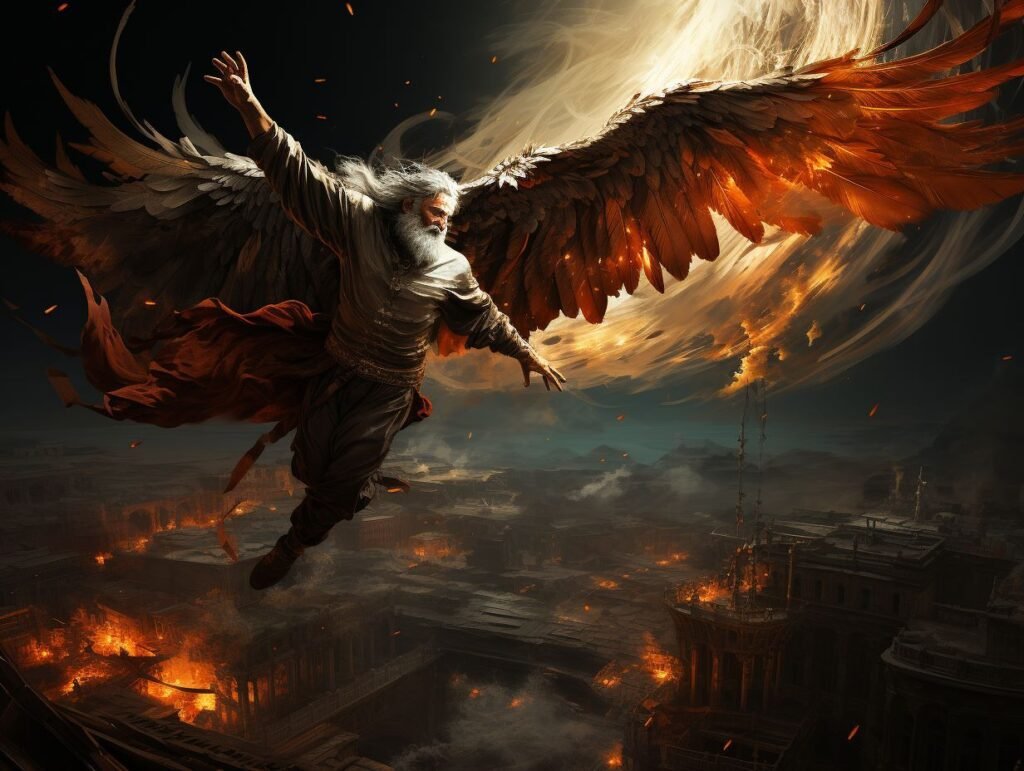
Avian Presence in Greek Mythology.
Birds in mythology Greek narratives abound with avian creatures that embody diverse attributes and emotions. The phoenix, with its cyclical death and rebirth, symbolizes the eternal nature of life. The owl, closely associated with Athena, signifies wisdom, strategy, and foresight. Greek myths often use bird symbolism to convey complex emotions and concepts.
The tale of Daedalus and Icarus serves as a cautionary tale about the consequences of hubris. In this myth, Daedalus crafts wings from feathers and wax for himself and his son Icarus to escape imprisonment. Despite his father’s warnings not to fly too close to the sun, Icarus’s youthful exuberance leads to his downfall as the wax melts and he falls into the sea. The myth encapsulates the perilous pursuit of human ambitions and the boundaries that should not be crossed.

Harmony with Nature: Uses of Birds and Animals.
Uses of birds and animals in mythologies often mirror humanity’s yearning for harmony with the natural world. Birds, as messengers and intermediaries between earth and sky, embody the interconnectedness of all life forms. Indigenous cultures have often depicted humans and birds in mutual cooperation, fostering a sense of unity with the environment.
The Haida people of the Pacific Northwest, for example, emphasize the significance of animals and their connection to the human world through intricate totem poles. These poles depict animals such as ravens, eagles, and whales, serving as a visual representation of the interdependence between species and the spiritual realms.

Folklore and Superstitions.
Bird folklore superstition has been an enduring facet of human culture. The presence of certain birds has been imbued with omens and portents, shaping cultural beliefs and practices. These superstitions reveal the intricate dance between humans and the natural world, where every action and occurrence is seen as interconnected.
The crow and raven have often been associated with foreboding. In European folklore, a raven’s call was thought to signal impending death or misfortune. Conversely, the song of the lark was believed to bring happiness and good news. These beliefs, though rooted in the past, continue to influence modern societies, with echoes of these superstitions present in everyday language and cultural references.
Conclusion.
In the vast tapestry of human experience, birds have emerged as conduits of meaning, symbols of transcendence, and mirrors of our relationship with the natural and spiritual realms.
The cultural significance of birds in global mythology is a testament to our shared human longing for connection, understanding, and harmony with the world around us.
From the soaring eagle of Native American traditions to the wise owl of ancient Greece, birds continue to inspire awe, wonder, and contemplation. As we unravel the layers of avian symbolism, we unearth a treasure trove of wisdom and insight that transcends time, geography, and belief systems.
Through their wings, both literal and metaphorical, birds guide us toward a deeper appreciation of our place in the grand tapestry of existence.


Pingback: Beautiful Birds Coloring Book for Adults - Florin Stanciu
Pingback: Winged Messengers: How Birds Connect Us to Divine Wisdom and Spiritual Transformation – Format space